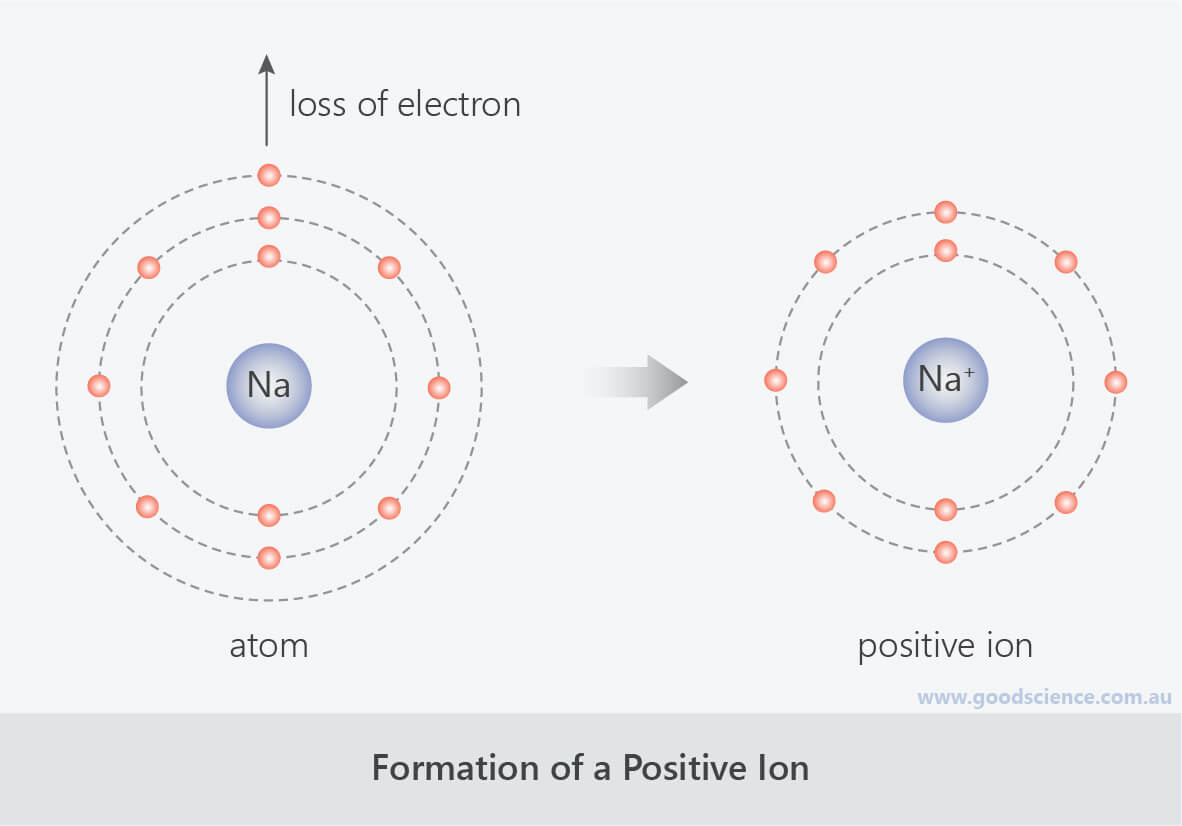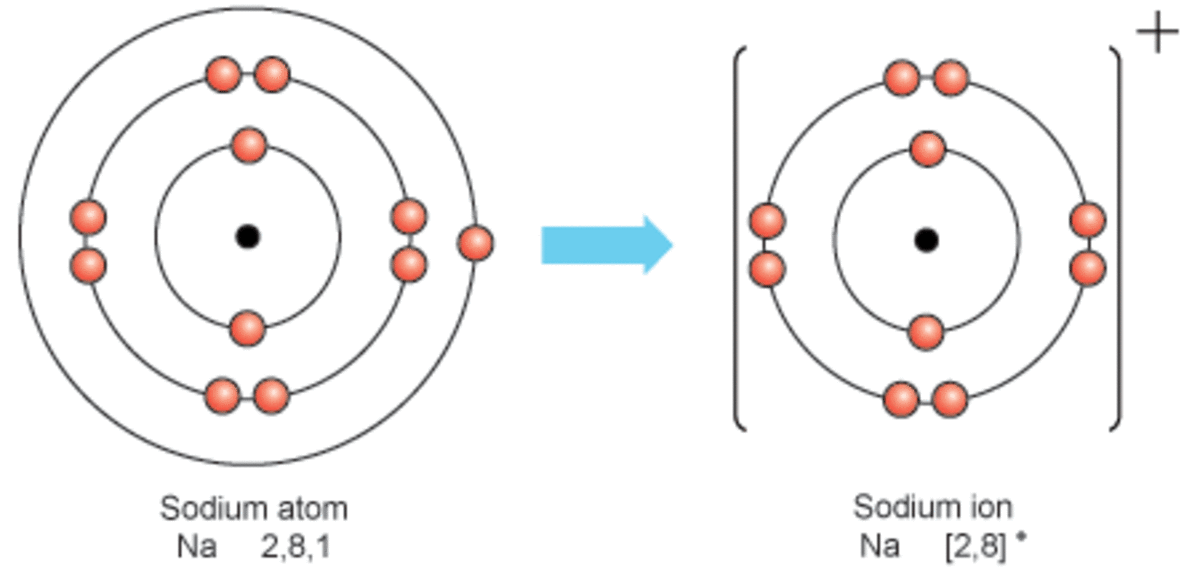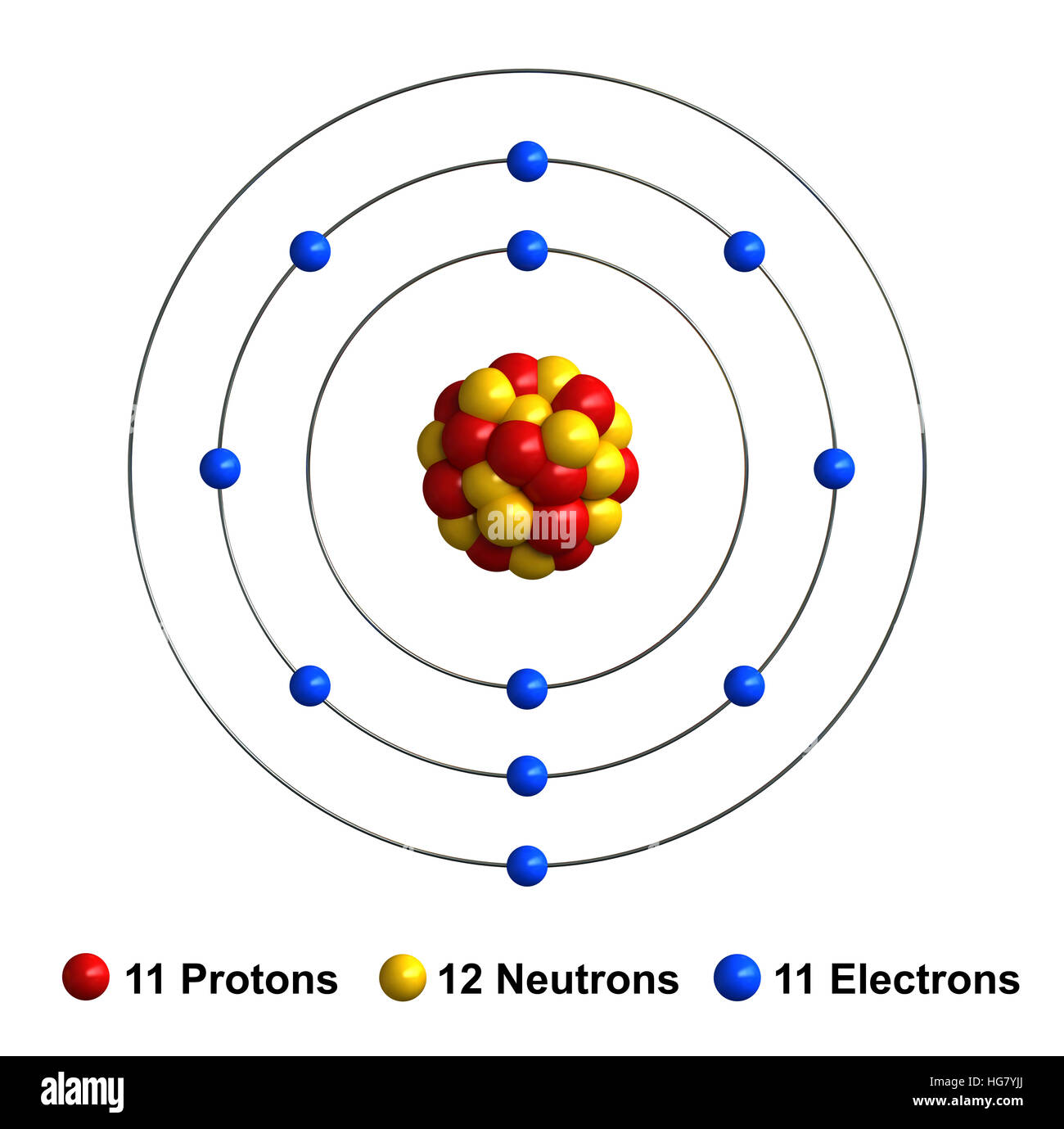When Sodium Atoms Form Sodium Ions They
When Sodium Atoms Form Sodium Ions They - Lose electrons any astronomical body that revolves around a larger body is called a. It is now the same as that of the noble gas neon. Web the sodium ion, na +, has the electron configuration with an octet of electrons from the second principal energy level. The term isoelectronic refers to an atom and an ion of a different atom (or two different ions) that have the same electron configuration. Web when sodium atoms form ions, they always form a 1+ charge, never a 2+ or 3+ or even 1− charge. Web when sodium atoms form ions, they always form a 1+ charge, never a 2+ or 3+ or even 1− charge. Web properties and production sir humphry davy because sodium is extremely reactive, it never occurs in the free state in earth’s crust. Web sodium is a chemical element with the symbol na (from latin natrium) and atomic number 11. Compare and contrast a sodium atom and a sodium ion and. The ions formed are negative,.
Thus, if you commit the information in table \(\pageindex{1}\) to memory, you will always know what charges most atoms form. Web when sodium atoms form ions, they always form a 1+ charge, never a 2+ or 3+ or even 1− charge. Web properties and production sir humphry davy because sodium is extremely reactive, it never occurs in the free state in earth’s crust. Its only stable isotope is 23 na. Web when sodium atoms form sodium ions, they a. The ions formed are negative,. Sodium diffuses in and is pumped back out, while potassium does the reverse journey. Web sodium is a chemical element with the symbol na (from latin natrium) and atomic number 11. Thus, if you commit the information in table 3.2 to memory, you will always know what charges most atoms form. Web when sodium atoms form ions, they always form a 1+ charge, never a 2+ or 3+ or even 1− charge.
Lose electrons any astronomical body that revolves around a larger body is called a. Web properties and production sir humphry davy because sodium is extremely reactive, it never occurs in the free state in earth’s crust. Web sodium ions are used to build up electrical gradients in the firing of neurons in the brain. It is now the same as that of the noble gas neon. Sodium diffuses in and is pumped back out, while potassium does the reverse journey. Web the sodium ion, na +, has the electron configuration with an octet of electrons from the second principal energy level. Its only stable isotope is 23 na. Web when sodium atoms form ions, they always form a 1+ charge, never a 2+ or 3+ or even 1− charge. This involves sodium (and its big brother potassium) diffusing through cell membranes. The ions formed are negative,.
Ionic Properties
Sodium is an alkali metal, being in group 1 of the periodic table. (in chapter 9 “chemical bonds”, we will discuss why atoms form the charges they do.) Web when sodium atoms form ions, they always form a 1+ charge, never a 2+ or 3+ or even 1− charge. Web the sodium ion, na +, has the electron configuration with.
PPT Valence Electrons PowerPoint Presentation ID651377
The term isoelectronic refers to an atom and an ion of a different atom (or two different ions) that have the same electron configuration. Web when sodium atoms form ions, they always form a 1+ charge, never a 2+ or 3+ or even 1− charge. Web sodium ions are used to build up electrical gradients in the firing of neurons.
The top panel of this figure shows the orbit model of a sodium atom and
The term isoelectronic refers to an atom and an ion of a different atom (or two different ions) that have the same electron configuration. Lose electrons any astronomical body that revolves around a larger body is called a. Thus, if you commit the information in table \(\pageindex{1}\) to memory, you will always know what charges most atoms form. Web when.
Formation of Ions and Ionic Compounds Good Science
Compare and contrast a sodium atom and a sodium ion and. Lose electrons any astronomical body that revolves around a larger body is called a. Web the sodium ion, na +, has the electron configuration with an octet of electrons from the second principal energy level. Its only stable isotope is 23 na. The term isoelectronic refers to an atom.
化学键原子如何结合?把原子结合在一起的力是什么?——Owlcation 188宝金博官网到底是哪个
This involves sodium (and its big brother potassium) diffusing through cell membranes. Web the sodium ion, na +, has the electron configuration with an octet of electrons from the second principal energy level. Web properties and production sir humphry davy because sodium is extremely reactive, it never occurs in the free state in earth’s crust. In 1807 sir humphry davy.
How reactive is an atom of Sodium(Na) and why?
In 1807 sir humphry davy became the first to prepare sodium in its elemental form, applying electrolysis to fused sodium hydroxide (naoh). Web when sodium atoms form sodium ions, they a. Sodium diffuses in and is pumped back out, while potassium does the reverse journey. Web a sodium ion is formed when a sodium atom loses a single electron. Its.
3d render of atom structure of sodium isolated over white background
Web when sodium atoms form ions, they always form a 1+ charge, never a 2+ or 3+ or even 1− charge. (in chapter 9 “chemical bonds”, we will discuss why atoms form the charges they do.) Sodium is an alkali metal, being in group 1 of the periodic table. The term isoelectronic refers to an atom and an ion of.
Sodium Atom Science Notes and Projects
Thus, if you commit the information in table 3.2 to memory, you will always know what charges most atoms form. In 1807 sir humphry davy became the first to prepare sodium in its elemental form, applying electrolysis to fused sodium hydroxide (naoh). The term isoelectronic refers to an atom and an ion of a different atom (or two different ions).
Atom sodium Royalty Free Vector Image VectorStock
Sodium is an alkali metal, being in group 1 of the periodic table. Lose electrons any astronomical body that revolves around a larger body is called a. The term isoelectronic refers to an atom and an ion of a different atom (or two different ions) that have the same electron configuration. Web when sodium atoms form sodium ions, they a..
3.2 Ions The Basics of General, Organic, and Biological Chemistry
Sodium is an alkali metal, being in group 1 of the periodic table. Web sodium ions are used to build up electrical gradients in the firing of neurons in the brain. Compare and contrast a sodium atom and a sodium ion and. Lose electrons any astronomical body that revolves around a larger body is called a. Web a sodium ion.
(In Chapter 9 “Chemical Bonds”, We Will Discuss Why Atoms Form The Charges They Do.)
Sodium diffuses in and is pumped back out, while potassium does the reverse journey. Web the sodium ion, na +, has the electron configuration with an octet of electrons from the second principal energy level. It is now the same as that of the noble gas neon. Web a sodium ion is formed when a sodium atom loses a single electron.
The Term Isoelectronic Refers To An Atom And An Ion Of A Different Atom (Or Two Different Ions) That Have The Same Electron Configuration.
Web when sodium atoms form sodium ions, they a. The ions formed are negative,. Lose electrons any astronomical body that revolves around a larger body is called a. Web when sodium atoms form ions, they always form a 1+ charge, never a 2+ or 3+ or even 1− charge.
This Involves Sodium (And Its Big Brother Potassium) Diffusing Through Cell Membranes.
Compare and contrast a sodium atom and a sodium ion and. Its only stable isotope is 23 na. Thus, if you commit the information in table \(\pageindex{1}\) to memory, you will always know what charges most atoms form. Web properties and production sir humphry davy because sodium is extremely reactive, it never occurs in the free state in earth’s crust.
The Ion Is Electrically Charged, While The Atom Is Electrically Neutral.
Web sodium is a chemical element with the symbol na (from latin natrium) and atomic number 11. In 1807 sir humphry davy became the first to prepare sodium in its elemental form, applying electrolysis to fused sodium hydroxide (naoh). Web when sodium atoms form sodium ions, they a. Sodium is an alkali metal, being in group 1 of the periodic table.









